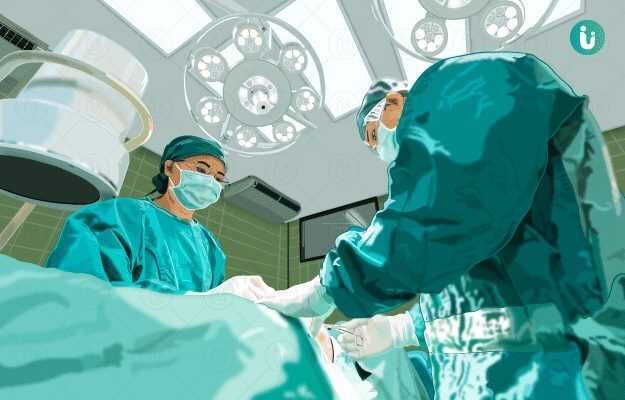Before the date of the surgery, the primary doctor may stop certain medications/replace such as anticoagulants (blood thinners), hormones (in people who are on hormone replacement therapy), heart medications, diabetes medications.
The patient is admitted usually a day or two before the date of the surgery with all the necessary reports and documents. Post admission, the patient changes into the hospital gown and is visited by the doctors of the concerned teams.
A final assessment of the patient is done by the doctors to clear the patient as medically fit for surgery and the patient is again counselled about the procedure, duration of the surgery and possible risks, complications and outcome.
Preoperative instructions
Preoperative instructions include:
- Continuing any medications as prescribed by the doctor for any pre-existing illness. Since the procedure is a major one, blood is already arranged and kept ready in case of major blood loss during the surgery.
- Taking consent for surgery from the patient and relatives while explaining the risks and outcomes.
- Preparing the site of surgery, that is shaving off the hair around the pelvis, abdomen and legs and taking a bath.
- Switching the diet from solid to liquids to finally intravenous fluids so that the patient is fasting for around 8-10hrs before surgery.
- Giving the patient a laxative to cleanse the bowels of faecal matter.
- Due to anxiety before the surgery, the patient can be given a mild sedative prescribed by the doctor so that the patient has a restful sleep before the procedure.
On the day of the surgery
On the day of the surgery the patient is shifted into the operation theatre (OT). The patient is placed into the lithotomy position (position where the patient is lying on their back and the legs of the patient are spread wide when giving birth).
Machines are attached to the patient that monitors the patient’s vitals (heart rate, blood pressure, oxygen saturation, breathing etc). Antibiotics are given through the IV cannula to prevent infection. A catheter is placed to allow drainage of urine during the surgery. The patient is given general anaesthesia so that she sleeps throughout the surgery.
A mould is made which has dimensions similar to the desired vaginal length and girth. The mould is responsible for maintaining the shape and size of the vagina during and after surgery till the surrounding tissues and supports are healed and strong enough. The techniques of the surgery are different based on the indications of surgery.
- In patients with loose vagina (because of injury due to childbirth/assault/trauma)
- The deformed tissue is removed.
- The vaginal canal is made tighter using stitches.
- The vagina opening is reduced.
- Injuries to other areas are repaired and support of other organs such as the bladder and rectum are strengthened.
- In patients with absent/narrow vaginal canal
- A functional tract is made between the urinary tract and the rectum.
- The graft tissue is placed to form the lining of the vagina.
- Excess tissue is removed.
- For cosmetic appearance, tissue grafting is done.
- In Gender Affirming Surgery
- The male external genitalia is partially removed and reconfigured to form the female external genitalia.
- A functional tract is made between the urinary tract and the rectum.
- The graft tissue is placed to form the lining of the vagina.
- Nerve endings are preserved and reconfigured so as to maintain the sensation for sexual pleasure.
The skin used for grafting is taken from the patient usually from the thighs or buttocks. Newer types of grafts involve skin flaps, amniotic membranes (the covering in which the developing baby is present) or buccal mucosa (skin from the inner lining of the cheek)
The duration of vaginoplasty varies depending on the cosmetic and functional requirement of the patient.
Once the surgery is complete, drains are placed in the pelvis to prevent the pooling of blood around the surgery site. All incisions are sutured and the patient is shifted to the post-op area.













































